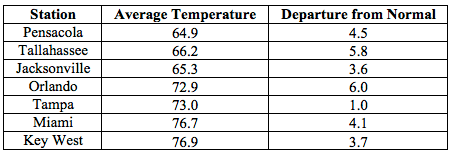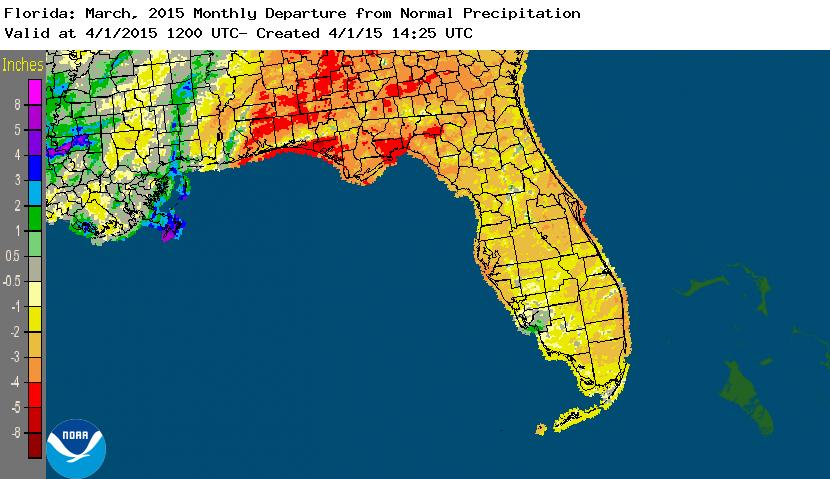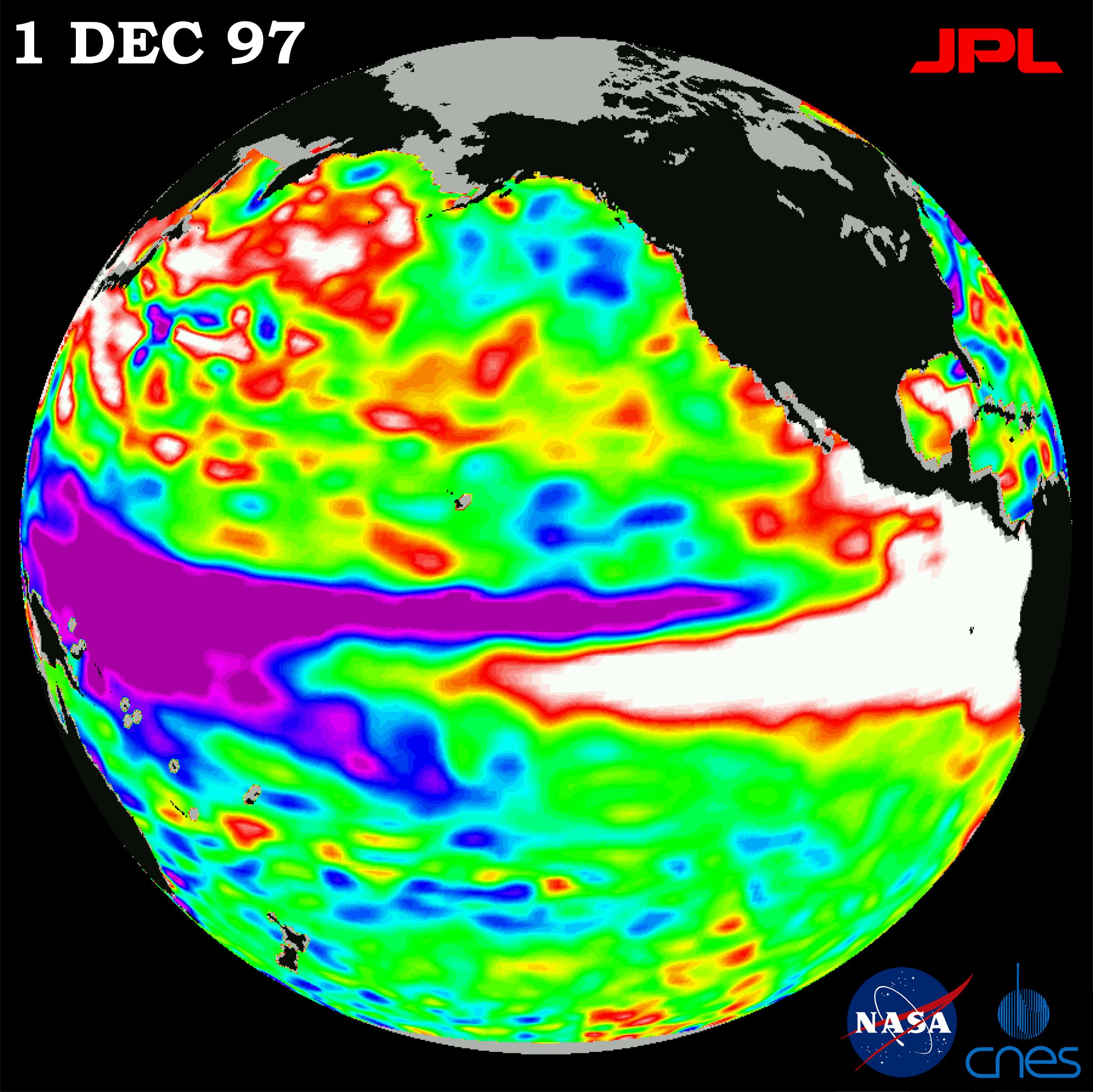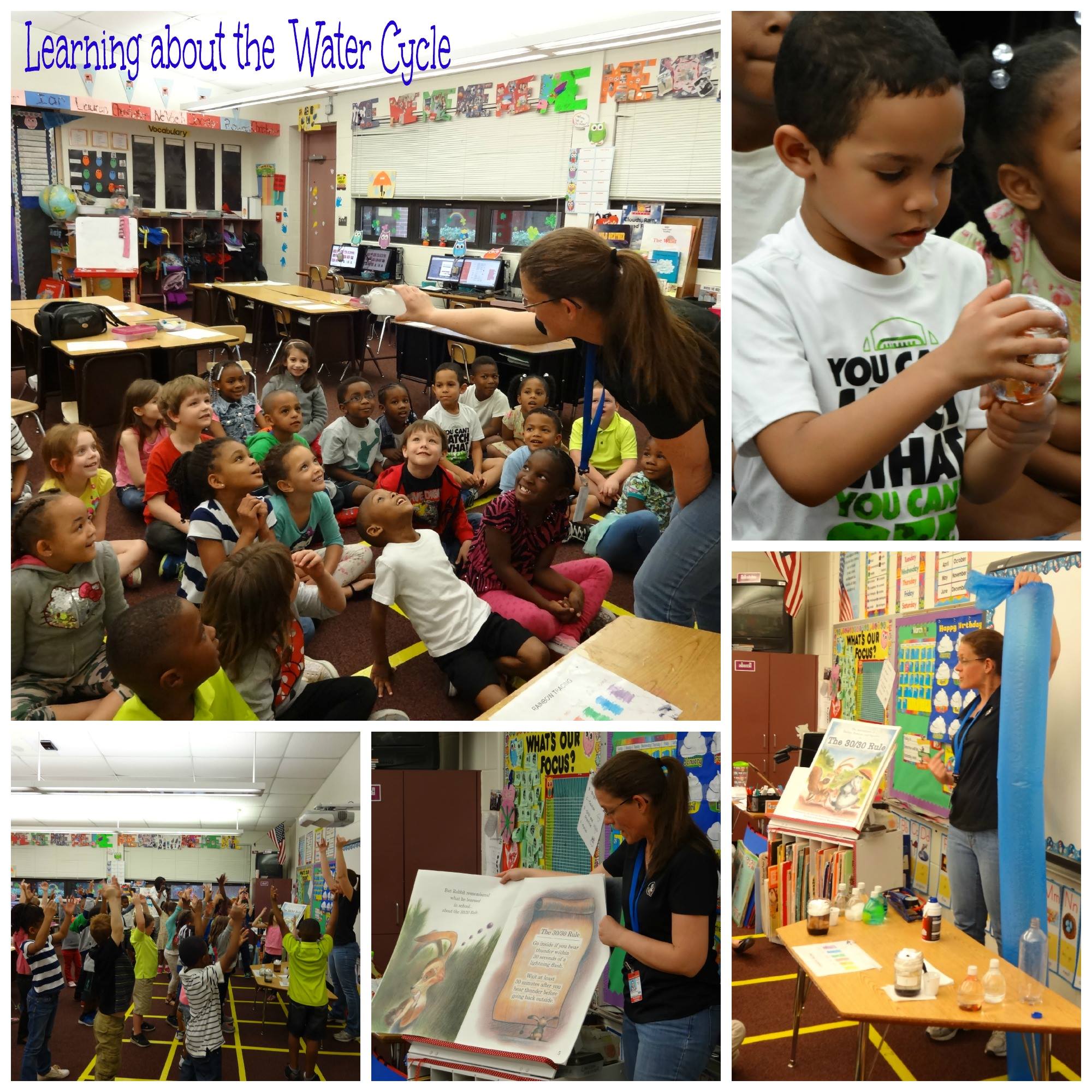Dear Florida Climate Center Friends,
We'd like to present you with the April 2015 edition of our newsletter. In this newsletter, you'll find our monthly climate summary, a list of special events that our staff attended, some pictures, and more. If you have any questions, please email us at climate@coaps.fsu.edu.
Thanks,
The Staff of the Florida Climate Center
 |  |  | David Zierden
State Climatologist | James O'Brien
Professor Emeritus | Melissa Griffin
Asst. State Climatologist |
|
March Climate Summary for Florida
The Florida Climate Center's March 2015 Florida Climate Summary is now available. The summary provides an analysis of temperature and precipitation trends across the state, along with data on hazardous weather, drought, the impacts of the weather and any records tied or broken for the month. During March, average temperatures were well above normal and rainfall totals were below normal most of Florida. ENSO-neutral conditions are continuing in the equatorial Pacific. The Climate Prediction Center (CPC) predicts normal temperatures and above normal precipitation for the state through June 2015. Past summaries are archived here.
| March average temperatures and departures from normal (°F) for select cities. |  |
| March precipitation totals and departures from normal (inches) for select cities. |  |
| A graphical depiction of the monthly rainfall departure from normal (inches) for March (courtesy of NOAA, NWS). |  |
|
|
10 Reasons Why El Niņo Has Been Here Nearly A Year
 On March 6th NOAA issued their monthly ENSO Discussion (a summary of the state of the tropical Pacific Ocean) and upgraded the "El Niņo Watch" that had been in place for nine months to an "El Niņo Advisory". An El Niņo Watch means that conditions are favorable for El Niņo to develop in the next 6 months, while an advisory means that El Niņo conditions are present and likely to persist for 1-3 months. Last spring we shared that changes were taking place in the Pacific and that the formation of El Niņo was likely, but by late summer the system had lost momentum and nearly returned to neutral conditions. However, with September bringing more westerly wind anomalies in the western Pacific and reinforcement from another Kelvin wave, the system re-energized and sea surface temperatures once again reached El Niņo thresholds and have remained above or near the 0.5 C line ever since. While all climate scientist acknowledge that this El Niņo has been hard to get a handle on, the question remains why NOAA took so long to officially recognize it? Looking back, there are many indicators that El Niņo has been in place since April of 2014....Here is a blog of ten reason why we can say that. On March 6th NOAA issued their monthly ENSO Discussion (a summary of the state of the tropical Pacific Ocean) and upgraded the "El Niņo Watch" that had been in place for nine months to an "El Niņo Advisory". An El Niņo Watch means that conditions are favorable for El Niņo to develop in the next 6 months, while an advisory means that El Niņo conditions are present and likely to persist for 1-3 months. Last spring we shared that changes were taking place in the Pacific and that the formation of El Niņo was likely, but by late summer the system had lost momentum and nearly returned to neutral conditions. However, with September bringing more westerly wind anomalies in the western Pacific and reinforcement from another Kelvin wave, the system re-energized and sea surface temperatures once again reached El Niņo thresholds and have remained above or near the 0.5 C line ever since. While all climate scientist acknowledge that this El Niņo has been hard to get a handle on, the question remains why NOAA took so long to officially recognize it? Looking back, there are many indicators that El Niņo has been in place since April of 2014....Here is a blog of ten reason why we can say that.
|
|
Community Outreach Activities
 March was another busy month in terms of outreach for the Florida Climate Center. Assistant State Climatologist Melissa Griffin spent time in local area elementary and middle schools, presenting about weather and climate. At the beginning of the month, she spent the day teaching kindergarteners about the water cycle through a variety of activities, including singing and dancing to the Water Cycle Boogie. March was another busy month in terms of outreach for the Florida Climate Center. Assistant State Climatologist Melissa Griffin spent time in local area elementary and middle schools, presenting about weather and climate. At the beginning of the month, she spent the day teaching kindergarteners about the water cycle through a variety of activities, including singing and dancing to the Water Cycle Boogie.
In addition to the providing edutainment (education through entertaining) to elementary students, Ms. Griffin also presented at a SciGirls Club and spent a couple of days during the month at local middle schools talking about the power and importance of wind, and basic information on how to be safe during different types of severe weather events.
|
|
Special Report: Sea Level Rise and its Impacts in South Florida
At the State Climate Office, we get many inquiries on the issue of sea level rise and how it is affecting our coasts, especially the low-lying and vulnerable coast of Southeast Florida. There have been a flurry of news articles in recent weeks addressing the problem of new development and rising sea levels increasing stress on aging and insufficient infrastructure, including last months National Geographic. We would like to share a particularly thorough and fair assessment of problem published in yesterday's New Security Beat. The author Katrina Schwartz is a political scientist and Wilson Center fellow. She is writing a book about the politics of implementing large-scale ecosystem restoration in the Everglades.
Florida's Saga Illustrates Challenges
Other Articles:
Treading Water
Rising Sea Bring Heavy Burden to Florida Coastal Economy
|
|
Upcoming Events
April 22-24, 2015:
Southeast Regional Climate Center TAC Meeting in Folly Beach, SC
April 25, 2015:
Earth Day 2015 at Cascades Park in Tallahassee, FL
May 11-12, 2015:
NIFA/USDA Organizational Project Meeting in Quincy, FL
May 15, 2015:
Tri-State 4-H Training Workshop in Macon, GA
June 23-26, 2015:
Annaul Meeting of the American Association of State Climatologists in Cape May, NJ
|
|
About Us
The Florida Climate Center is part of a three-tiered system of national, regional, and state climate offices, including NOAA's National Climatic Data Center and the Southeast Regional Climate Center. The Florida State Climatologist and other staff at the Florida Climate Center provide the following information and services to the people of Florida:
· Climate Data:
Historical weather observations for weather stations throughout the state of Florida. We are able to provide data for most stations from 1948-present.
· Climate Information:
Long-term historical averages for various stations, climate divisions, and the entire state.
· Extreme Event Records:
Information and analyses on extreme events such as freezes, droughts, floods and hurricanes.
· Special Analysis:
With their vast knowledge of El Niņo, La Niņa and climate variability, the State Climatologist and staff can offer expert insight into Florida's climate trends.
· Outreach:
Activities, presentations, and workshops that inform and educate the people of Florida about current and emerging climate issues. We also coordinate volunteers for the Community Collaborative Rain, Hail & Snow Network (CoCoRaHS).
More About Us
|
|